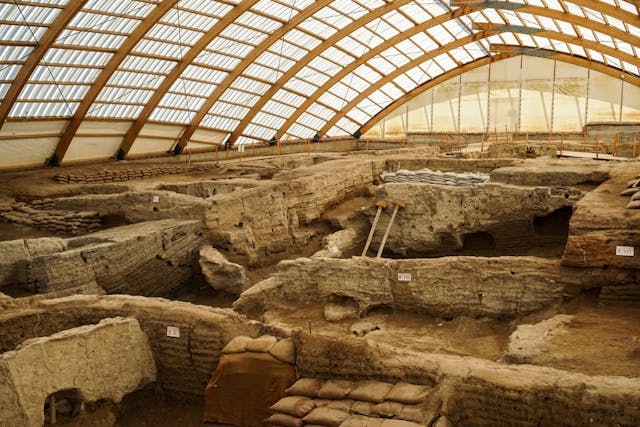
TAGTIK NEWS - TO THE POINT

Evidence points to a matrilineal society
Archaeologists have long suspected that Çatalhöyük, an ancient settlement in modern-day Turkey, was unusual. Now, cutting-edge DNA work confirms it: 9,000 years ago, women were likely at the heart of this remarkable Neolithic community.
Unlike the more familiar patriarchal societies, life in Çatalhöyük revolved around maternal lines. DNA from 131 skeletons found beneath the ancient homes revealed that people living together were almost always related through their mothers. When couples moved in together, it was the men who joined the women’s families - not the other way round.
And it gets juicier: female burials were found with up to five times more grave goods than those of men, suggesting women were not only central to family life but also held higher status. But was this a true matriarchy? Not necessarily, says archaeologist Eva Rosenstock—matrilineal living doesn’t always equate to women actually holding power, even if the two often go hand-in-hand.
Promoting equality
The icing on the archaeological cake? Some kids were ‘swapped’ between households, likely to promote equality and fair resource sharing. The secret to unearthing these familial connections? The petrous part of the inner ear—a veritable DNA time capsule!
So how did such an egalitarian, women-centred society evolve into the male-dominated cultures of later times? That’s a mystery for future excavations. But for now, Çatalhöyük stands as a fascinating outlier—a place where, for millennia, women truly ruled the roost.
(Michael Leahy. Source: DW.com Photo: Talha Aytan / Pexels)
LATEST NEWS

Jafar Panahi Wins New York Award and is Sentenced to Prison by Iran

Born on December 2: Peter Kingsbery, founder of Cock Robin with firebrand Ana LaCazio

Born on December 1: Julee Cruise, "Twin Peaks'" haunting voice

Born on December 1st: Alain Bashung, French rock poet who waited a long time for success

Born on November 30: Billy Idol, the (kind) rebel of Generation X

Born on November 28: Randy Newman tells stories and makes movies
Quick links